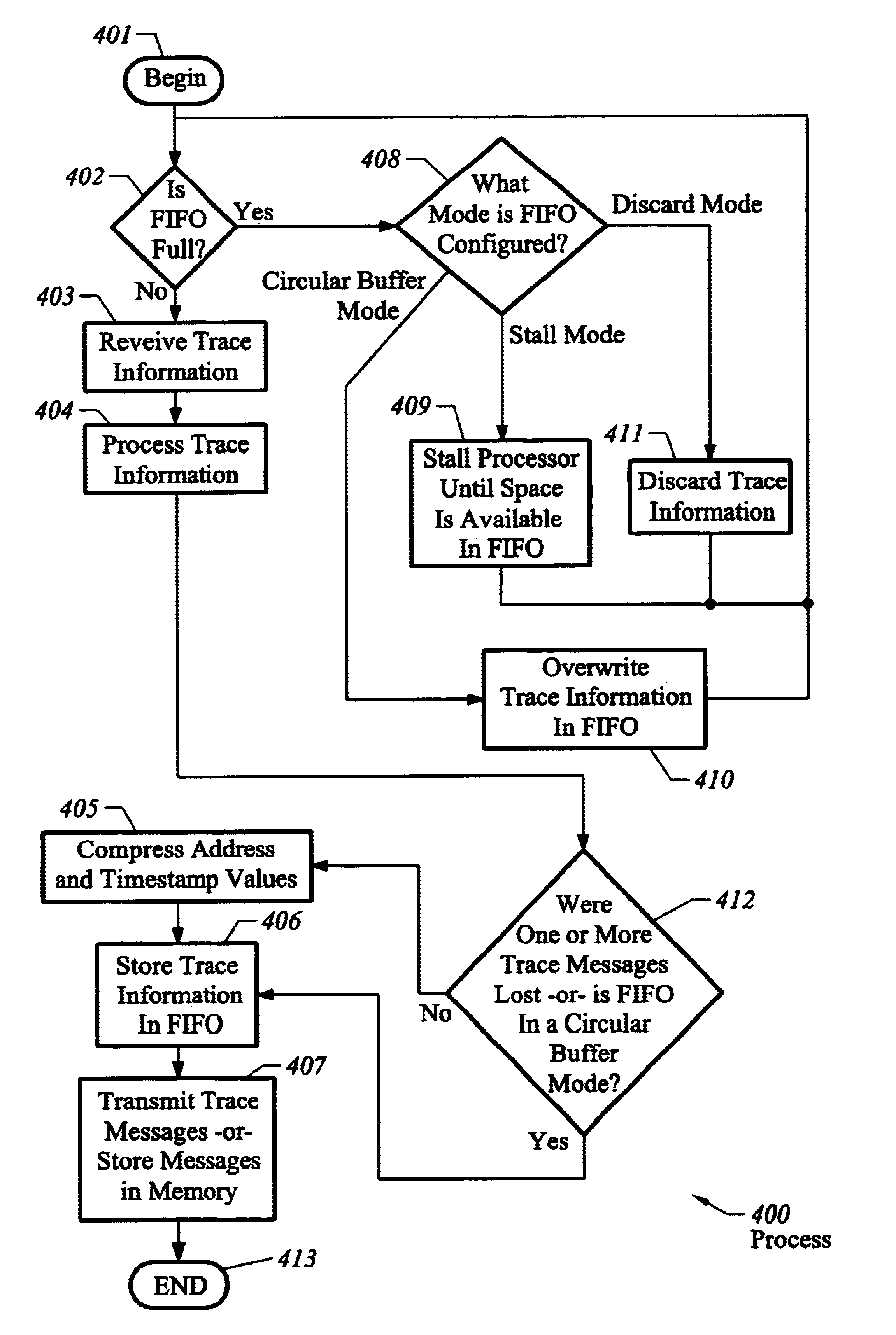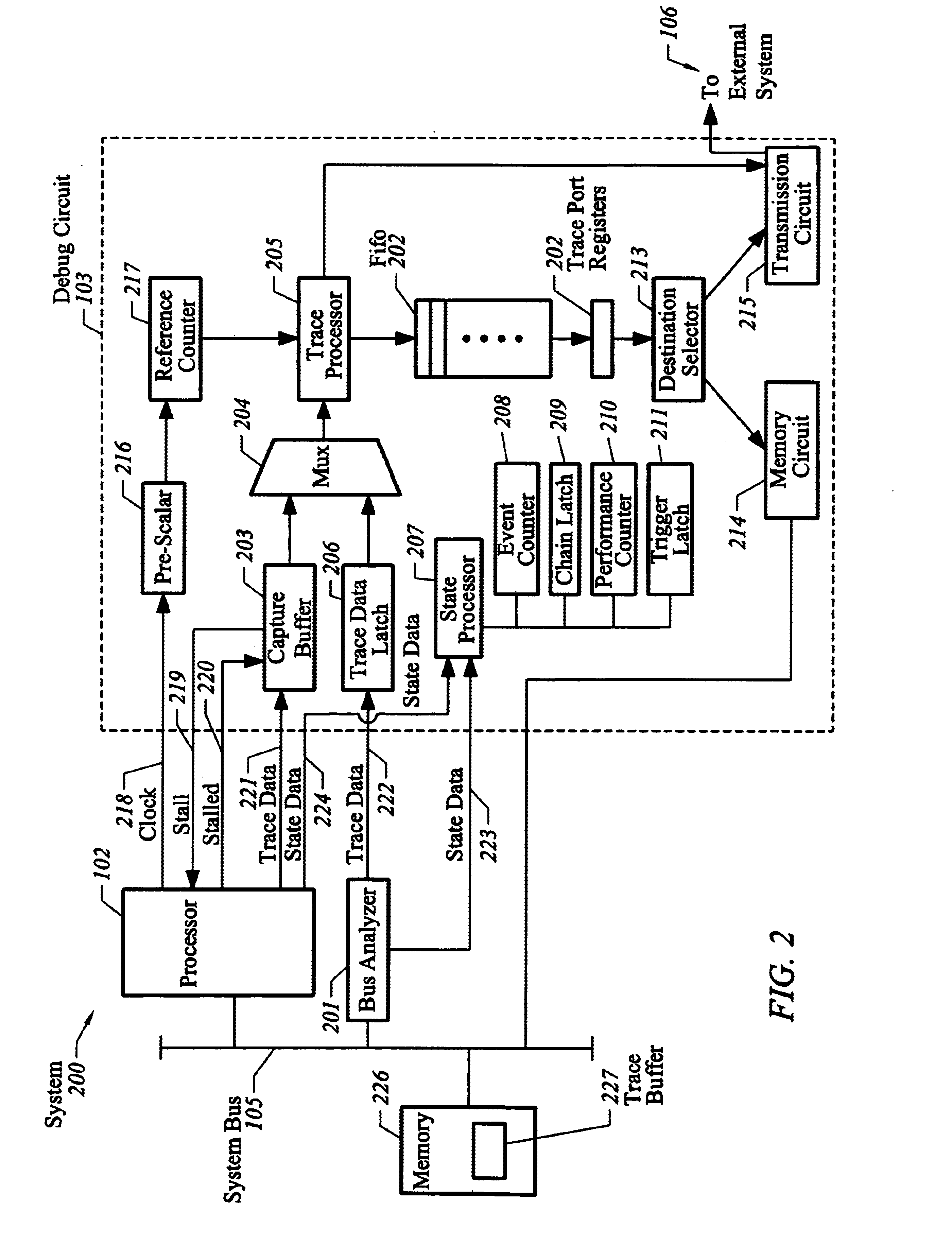Method for compressing and decompressing trace information
a trace information and compression technology, applied in the field of performing trace, can solve the problems of affecting the performance of trace information, and difficulty in accessing trace information, so as to reduce the bandwidth requirements of links to external systems and the amount of trace information, the effect of maximizing the trace storage on the chip
- Summary
- Abstract
- Description
- Claims
- Application Information
AI Technical Summary
Benefits of technology
Problems solved by technology
Method used
Image
Examples
Embodiment Construction
[0042]One embodiment of the invention is described with particularity with respect to FIG. 1. FIG. 1 shows a block diagram of an integrated circuit device 101, or system-on-chip (SOC) mentioned above. This circuit may include a processor 102 and debug circuit 103 interconnected by a system bus 105. System bus may be a conventional bus, packet switch, or other communication medium used to communicate operating information between modules of device 101. Operations such as reads, writes, swaps, and the like are typical operations that are performed between modules.
[0043]Processor 102 is a device which is adapted to read and execute program code in a one or more processor instructions, and to perform operations on data. Processor 102 may read data from a number of data sources, and write data to one or more data stores (not shown). These data stores may include Random Access Memory (RAM), a computer hard disc accessible through a hard disc controller, storage accessible over one or more...
PUM
 Login to View More
Login to View More Abstract
Description
Claims
Application Information
 Login to View More
Login to View More - R&D
- Intellectual Property
- Life Sciences
- Materials
- Tech Scout
- Unparalleled Data Quality
- Higher Quality Content
- 60% Fewer Hallucinations
Browse by: Latest US Patents, China's latest patents, Technical Efficacy Thesaurus, Application Domain, Technology Topic, Popular Technical Reports.
© 2025 PatSnap. All rights reserved.Legal|Privacy policy|Modern Slavery Act Transparency Statement|Sitemap|About US| Contact US: help@patsnap.com



